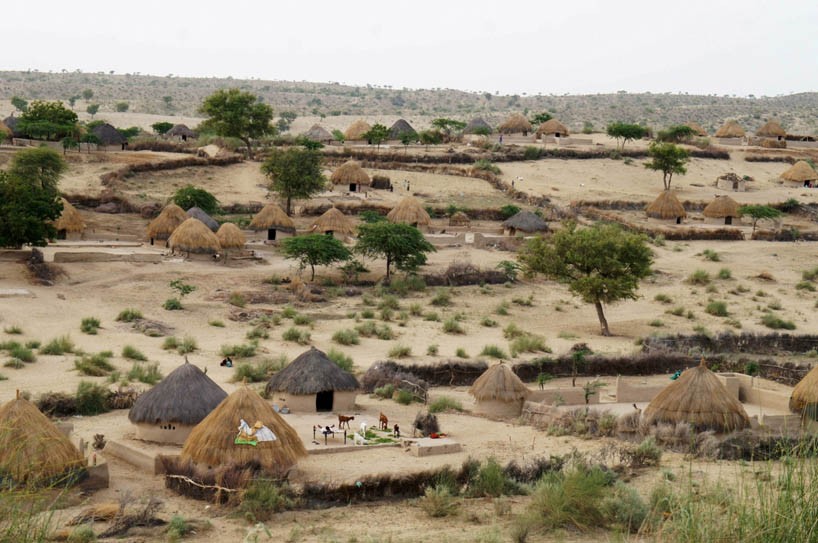
Tharparkar has an idyllic life and could serve as a model for the rest of the country for its diversity and peacefulness

The desert has its own beauty and splendour. Treading in the wilderness can be an enriching experience for those who wish to get away from it all. Tharparkar is a highly recommended destination for those seeking to look within -- Dasht ko dekh kar ghar yaad aaya (seeing the desert reminded me of home).
Called the land of peacocks, blue peacocks roam around freely in Tharparkar, adding life to the monotony of the desert. One can see them flying around in the desert in pairs or flocks, and sometimes even dancing. They are also seen around the huts of villagers as the locals feed them when they come near their houses. One of the villages called Malva has been declared a protected area for peacocks. Here the peacocks are in abundance and roam in flocks.
Until a decade ago, this part of the world was not easily accessible to all. Only the locals or a daring few would tread this path through the desert as there were no concrete roads. Across Mithi (Mirpurkhas) travellers had to travel by camels or old army trucks called kaikrra in the local language.
Nagarparkar is the central town of Tharkarpar. It used to be a business hub for merchants trading between Bombay and Umerkot, Sindh before and after the partition. The town lies at the base of the magnificent Karoonjhar Hill. The pebble-shaped formation of the Karoonjhar Hill presents a beautiful view if one is standing at the Nagarparkar side of the town. The reddish colour of the hill is due to its formation of red granite stone.
Since Thar is an arid area, while travelling through it one can experience scenes of herders grazing their cattle amongst thorny bushes and scanty trees. You can witness camel caravans and women fetching water in their traditional dresses, walking through undulating paths, pitchers on their heads.
Many tourists tend to visit a famous well near Bhalwa village where folk singers come from the village to recite folklore in their local language. Bhalwa village is also well-known for being the native village of Marvi - the female protagonist of the very famous Umer and Marvi folk love story, where a ruler of the country saw her at the village well. He was so impressed by her beauty that he proposed to her. On rejection of his proposal, he imprisoned her in the fort with the hope that one day she would accept his proposal. After realising that she is not going to submit, he released her and sent her back to her village with a lot of gifts, where she got married to her cousin.
The traditional thatched huts called chunwra, constructed from the branches of a shrub known as khipp reflect the unique living style of the Thari people. This traditional roofing keeps the temperature of the huts cool in the extremely hot season. These traditional hut clusters also make for a fascinating architectural landscape view while travelling through the desert.
Mostly the temperature remains very hot throughout the year in Tharparkar, which is why flocks of people gather at the water wells (panghats). While dealing with this daily chore they also get an opportunity to meet and mingle. These panghats are sometimes well-maintained by the community with shady trees, a sitting place for people and water ponds for flocks and cattle.
There are a number of Hindu and Jain temples that are the historical heritage of Tharparkar, but also very much alive today. They are worth visiting as they portray the craftsmanship of craftsmen and artists who existed in different eras of the history of Tharparkar.
Tharparkar is bestowed with a vast array of natural, cultural and historical beauty, but in the past due to its harsh weather and inaccessibility, common people could not come to this part of the world. The problem of inaccessibility has been solved after the construction of the metal road up to Nagarparkar, the heart of Tharparkar.
The people of Tharparkar are friendly and peace loving, but owing to its dry and harsh weather condition majority of them live below the poverty level. One way of helping them and bringing them back from extreme poverty is to promote eco-tourism so that the Thari population can earn their livelihoods from tourism and its auxiliary businesses.
A visit to Tharparkar can be an enriching experience for those who wish to spend some time in peace and serenity surrounded by natural beauty and for making a difference in the lives of the poor and needy in this world.